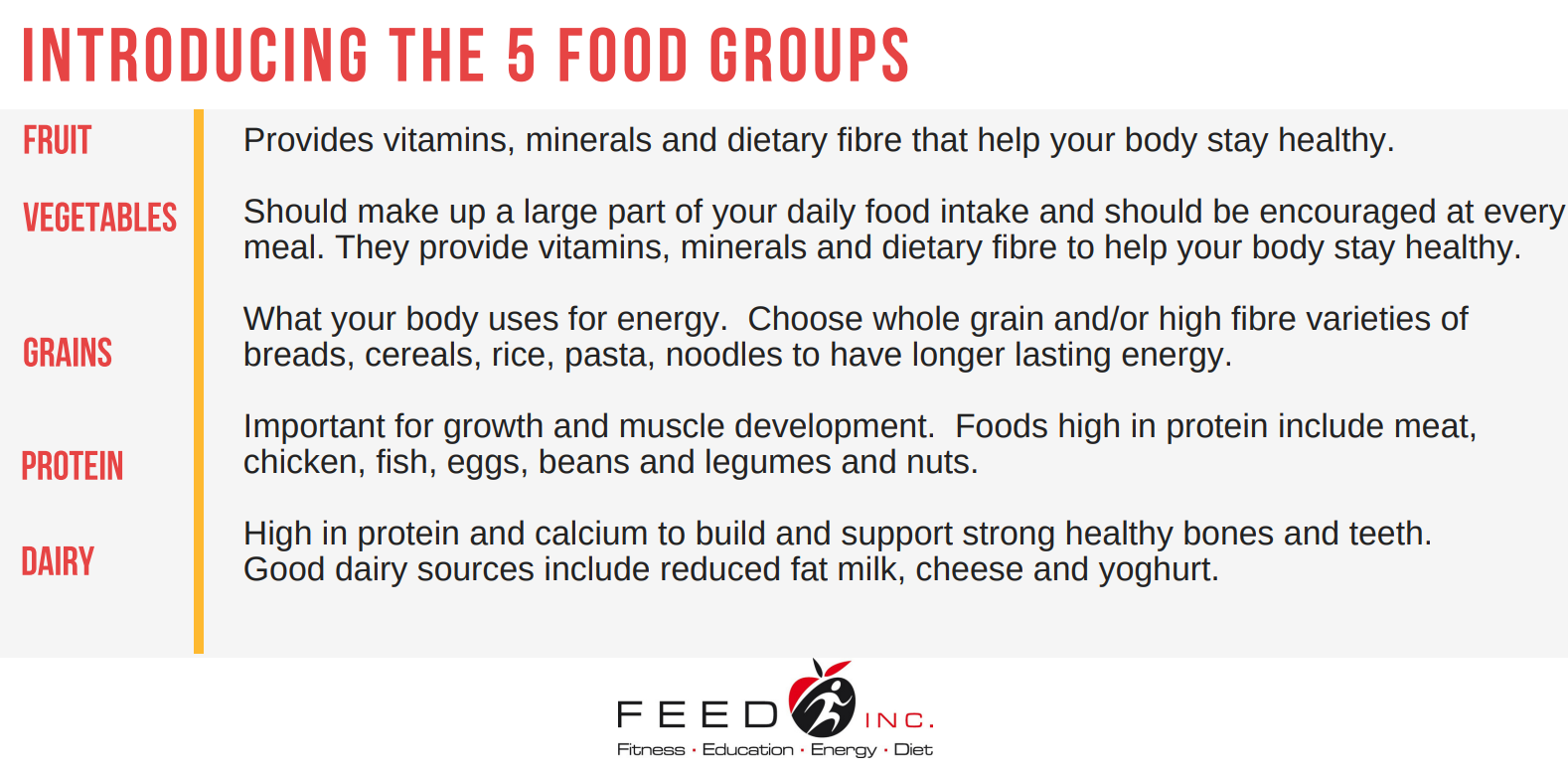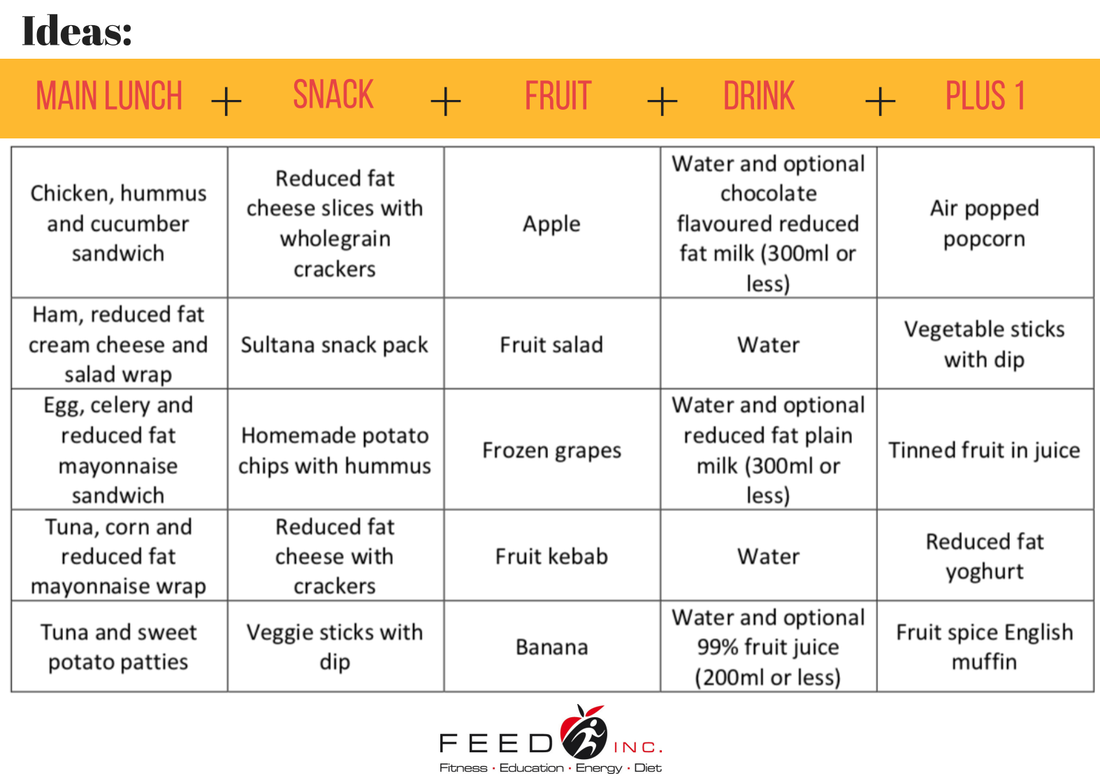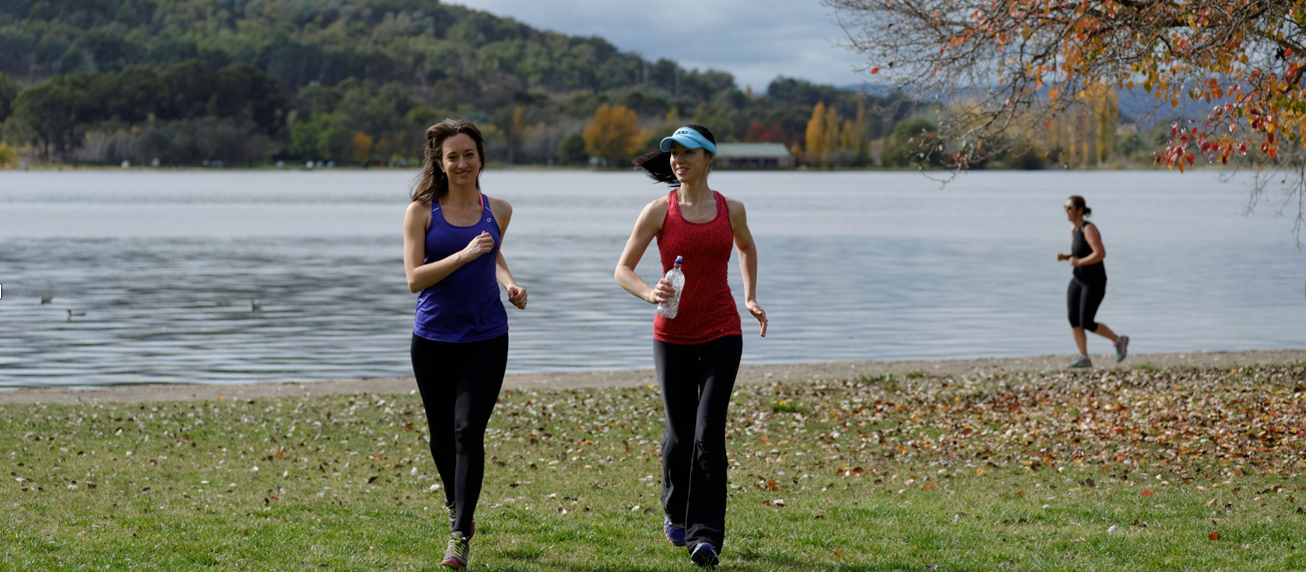|
I was recently asked to choose 5 top foods for winter... Here are my picks.
Protein rich foods play a significant role in repair and recovery – helping us maintain good health and vitality. Many protein rich foods are high in iron and zinc which aid the development of white blood cells, required to help fight off illness. Including a variety of protein rich foods like lean beef, salmon, poultry and eggs provide these important nutrients. Legumes like kidney beans, lentils, chick peas and cannellini beans are a superb inclusion in the diet. Legumes are affordable and shelf-stable, and high in dietary fibre which helps to keep our bowels and gut healthy. Soluble fibre which can help lower cholesterol levels and are slowly digested by the body – energising us throughout the day. They delicious in soups and casseroles and can bulk out mince meals easily. Legumes are also a good source of folate, potassium, iron and magnesium. Natural or Greek yoghurt contains probiotics, or healthy bacteria as well as being a good source of calcium. Probiotics in food contain live bacteria that can help to keep the digestive system healthy which in turn may help to maintain a healthy immune system. If yoghurt doesn’t take your fancy – other foods such as fermented foods, like Kimchi and sauerkraut are also packed with probiotics to help promote a healthy gut. Oats offer many vitamins and minerals, such as phosphorus, thiamin, magnesium that help with optimising health. It’s lovely to warm up in the morning with a bowl of porridge; filling and a slow release of carbohydrate, particularly if made on milk. Oats are a good source of dietary fibre. Garlic has been long touted as prevention for common colds but the jury is still out based on the evidence. The World Health Organisation recommends we eat a clove of garlic a day for general health. It has high levels of allicin and other sulphur compounds that are thought to be responsible for helping with good health. Honorable mentions: Root vegetables, ginger, onion, pears and nuts Lisa’s Spiced Chicken with Yoghurt (pictured) Serves 4 WHAT YOU NEED:
WHAT YOU DO:
Eat a varied and nourishing diet loaded with plant foods - and you will be well set this winter. Lisa Xx
0 Comments
By Jelena Puskarica
Are you thinking about eating as a source of nourishment, pleasure and joy? Or does it make you feel guilty and ashamed? Have you been eliminating certain foods from your diet just because you believe they are bad for you? Or maybe you are feeling super proud for following the “clean eating” trend? Bad food, good food…Guilt-free food, guilty food….Clean eating, dirty eating. Really? It has became a norm in society to stick such labels to food. How did we develop such a complicated relationship with food and where are the roots of this problem? When we were children we used to be told to “clean the plate” and asked for “just one more bite” overriding our internal cues of hunger and satiety. We got accustomed to language that classify food into good and bad. Using negative feeding practices while naming and shaming certain foods didn’t give us the greatest start in developing healthy relationship with food. And then we move into adolescence to be told by social media influencers that we should juice celery to detox our bodies. It looks like our kidneys and liver just got competition! No wonder we feel completely baffled. Many of us are overthinking and over-analysing food... WE NO LONGER FIND JOY IN FOOD. Eating has somehow become a refuelling process where the only thing that matters is the right ratio of carbs, fats and protein. Or even a mixture that excludes some of these macronutrients that are not good for us (at least that’s what we have been told!). But what happened to our food related memories, connections and culture? In my youth I spent a few months in Spain, working at the car factory. In those days group of colleagues and I often went to a local “taberna” for lunch. I was embracing the Spanish culture and learning the new language while sharing “tapas” with local people. I’m sure that my Spanish experience would be regretful one if I thought that “tapas” were not “clean” enough and instead of eating out with my friends I sat in the corner drinking celery juice? Let’s rebuild our relationship with food.
I hope next time you sit down to have a meal you will give yourself a permission to truly enjoy it…because we all deserve that! By Jelena Puskarica
We all know about the disease of modern age-obesity. It is crippling us at an alarming rate. We worry about our kids and tackle this issue on every single level. After all, every fourth Australian kid is overweight or obese. But it seems to me that their “thinner’ “peers have often been forgotten. And that many don’t even consider this as a problem, even though these kids have equal risks of developing nutrition-related health issues. If you have an underweight child, as I do, you know exactly what I’m talking about. Have you been told... it’s just the way your child is? Or that they should simply eat more food? Seems easy, right? All I must do is provide healthy nutritious food and motivate my boy to eat it. Even easier for me, I’m trained to do this stuff! ✓ I know how to feed my family ✓ Our diet is abundant in vegetables and wholegrain foods ✓ We have a good mealtime routine and my kids don’t graze on snacks between meals ✓ We don’t keep many energy-dense foods in our pantry and hardly ever do takeaways Sounds like good advice I would give to any parent of a young kid who is trying to establish healthy eating habits. EAT. MORE. FOOD. It worked for my other three children... But not for my son... Instead of thriving, he was just surviving. Let me be clear - my son does eat his food. He is not even fussy about trying new food and ironically vegetables are on the top of his list of favourite foods. But he simply can’t have much of it. After a bowl of side salad his belly is too full to contemplate the main meal. Food doesn’t rate highly on his agenda and he often forgets to eat if I’m not around, so I worry whether he is getting all the nutrients he needs. I had to find a way to feed my boy without feeding the rest of the family with extra calories they didn’t need. This meant providing small portions of energy-dense, yet nutritious food packed with healthy fats and protein, several times a day. This gives him the opportunity to eat whenever he feels hungry and not make a fuss when he doesn’t. EASY CHANGES
I might add, the ‘extra snack’ before bedtime was the cause of many “it’s not fair” exclamations from his siblings! BUT, more than food, my boy needs constant encouragement, support and reminders to eat. It is a work in progress and requires time and patience. So while you may be celebrating an occasion when your child tries a new vegetable previously rejected many times, I consider a victory when my son asks, “Mum, can I have a second piece of chocolate cake?” … because cakes can sometimes be healthy too! Jenelle Croatto APD
The new year has rolled around and for many this is when those hand-on-heart resolutions are boldly declared. If you’re one to make a new year resolution - go for it! But, do make sure it’s one which fills you with enthusiasm, rather than dread! Which diet should you pick? The truth is, all ‘diets’ will work if you can stick to them, however most are downright boring, unsustainable and seriously make for a lousy dinner party. This year, I encourage you to do away with the diets and instead focus on improving your health. In all honestly, your gravitation pull does not me provide me with a good understanding of your health – but, your energy levels do! Let weight loss simply be a nice ‘side-effect’ of achieving great energy in your life. When we focus on each aspect of health – nutrition, activity, sleep and joy - and remove those restrictive ‘diet rules’, your body will naturally find its most happy weight. To get you started, here are some ways you can shake-up the standard health re solutions.
Jenelle Croatto APD
Among all of the incredibly nutritious foods out there, is it possible to pick a top 5? Where would we even begin? Well, across the globe there are pockets of people who quietly go about their day, living longer and more healthful lives than anywhere else on the planet. These pockets have come to be known as the world’s Blue Zones - a termed coined by Natural Geographic Fellow and journalist Dan Buettner. Blue Zones are home to the people of the world who live longer than anyone else. What leads the inhabitants of Blue Zones to reach triple digits is not only what they eat - but how they keep active, find purpose, have a sense of belonging and remain purposely engaged throughout their entire life. Interestingly, while dietary patterns vary between each Blue Zone, they all share one commonality – a diet based on plants. Let’s take a look at some of the exceptionally potent foods from each of the Blue Zone regions. Purple Sweet Potato - Okinawa (Japan) Not only does this cousin of the orange sweet potato feature in a traditional Okinawan diet – it accounts for whopping 67% of it! Rich in fibre, low GI carbohydrates, carotenoids and vitamin C – the sweet potato has been Okinawan staple since the 17th century. To make full use of the sweet potato plant, the leaves are also eaten in miso soup Cannonau Di Sardegna – Sardinia (Italy) This robust, ruby elixir is a type of red wine that Sardinians enjoy each and every day. Not only are the health benefits thought to be due to the flavonoids present in the wine, but also how it is enjoyed – alongside a meal and in jovial company. Black Beans - Nicoya Peninsula (Costa Rica) Typically paired with rice and corn tortillas, black beans are eaten everyday – if not at every meal. As with all legumes, black beans are a terrific source of protein, resistant starch (fuel for healthy gut bacteria) and contain impressive amounts of iron. The vivid dark purple colour is thanks to anthocyanins, a powerful phytonutrient which helps protect against free radical damage. Lemon - Ikaria (Greece) In what may strike a sour note in those who happen not to like them, lemons are foundational components of the Ikarian diet. A critical ingredient for their daily tea, the people of this tiny Greek Island do not underestimate the rich nutritive value of a fruit which is easy to overlook. Lemons, for the record, are incredibly rich in a wide array of phytochemical compounds including terpenes, tannins and polyphenols. Artichoke - Loma Linda (California, US) In a region of the world where they follow what is sometimes referred to as the “Garden Of Eden” diet, it should come as no surprise that a leafy plant would round off this list. California grows an astonishing 99% of America’s artichoke, so this very much a home-grown food for the people of Loma Linda. So many things could be said about this generally under-appreciated vegetable, but I will leave you with the fact that a 100 gram serving of artichoke has more dietary fibre than 100 gram serving of broccoli AND 100 gram serving of Brussels sprouts combined. Never cooked or prepared artichoke before? Take a look at this useful step-by-step guide. So, there you have it, five foods with tremendous nutritional value! Whether it be one of these Blue Zones standouts or simply eating more of the plant foods you already consume (but do cap the red wine,) I guarantee your body will love the extra nourishment. Want to live a long and healthy life? Eat more plants. It’s that simple. Article developed in conjunction with Andy De Santis – Kaleigraphy - https://andytherd.com/Kaleigraphy/ When packing a healthy lunchbox for your child, we recommend thinking of a lunchbox in terms of the five food groups and making sure each group is represented. This will provide them with a nutritious supply of food to grow healthy and strong and provide them with the energy they need to get through their active days. Turning the food groups into a lunchbox – the CORE 4: Using the 5 food groups, follow the CORE 4 guidelines to help make packing a healthy lunchbox easy.
Lunchbox ideas: Snack ideas:
Rainbow chips: cut into chips or wedges — parsnips, potatoes, carrots, sweet potato, beetroot and zucchini. Drizzle with olive oil and a little garlic powder before cooking. Tip: to make homemade chips crunchy, rinse off excess starch and dry with kitchen paper or a clean tea towel. Dippy sticks: carrot, zucchini, capsicum, cucumber, baby corn or celery sticks (crunchy vegetables can be softened by steaming for very young children). Ants on a log: fill celery sticks with low fat cream cheese or hummus and place sultanas across the top. Veggie jaffle: fillings can include spinach and feta; baked beans; mashed potato and cheese; pumpkin and ricotta. Banana bubbles: skewer a banana piece onto a paddle pop stick. Coat with low fat yoghurt, roll in puffed rice and serve frozen. Fruit smoothies: simply blend yoghurt, milk and fruit such as bananas and berries (strawberries, raspberries, blueberries). Traffic lights: rounds of kiwifruit, watermelon and banana. Air popped popcorn: serve in patty cases or paper bags. Garlic toast fingers: mix olive oil, minced garlic and chopped parsley. Brush onto wholemeal bread, cut into three fingers and lightly bake. Pita bread nachos: pita bread slices baked in the oven until crisp and then sprinkled with cheese and Italian herbs. Raisin toast fingers: cut into three fingers and use a thin spread of spread. Yoghurt: sprinkled with muesli and fresh or tinned fruit. Lisa Donaldson APD
Making change is not easy. There is literature, scientific studies and research around the complexities and mental challenges involved in making change. Many find that they embrace a new goal or a shift in their life with determination and gusto for about 2 weeks… and then, ‘road blocks’, excuses and ‘relaxing the reins’ starts to slow people down. I have put together some hot tips for staying on track and sticking with your plan. Organisation/planning Without question, being organised and diarising your exercise, shopping, cooking and prepping is the number one step towards success. There is no way you can succeed without a plan. So grab your calendar and focus on penciling in everything from meal prep to training sessions. Make a plan and watch it happen! Packing lunches All meals are important, but for most people lunches can be the most challenging because you are away from home and surrounded by temptation. Packing a lunch every single day will ensure you will have nourishing food with you throughout the work day and this will minimise the allure of the charity chocolate box down the hallway. Have supporters Find people who are interested in health and wellbeing. Perhaps someone at work, a neighbour, a family member or an old friend who lives and breathes a healthy lifestyle. These supporters will become motivators and will promote consistency and perhaps some friendly competition. Join an exercise group/team Committing to a team or meeting a friend for a run on a regular basis will help you stay on track. Companionship and/or team mates will be there for you, even when you don’t feel like moving! Plus, they will rely on you too and you don’t want to let anyone down, right? Make water your friend This may seem a little odd, but having a bottle of water with you at all times can be hugely beneficial. Keeping hydrated has a number of benefits, but it will also ensure that thirst and hunger are not confused. Keep a bottle on your desk and in your bag. Master some 15 min meals You will have days where you feel exhausted and cannot be bothered cooking. Nailing a few 15 min meals will ensure that you can pull together a decent meal fast, without dialling up for pizza. My go to is an vege packed omelette - makes for a nourishing meal in no time. Have an emergency stash at work There will be times where you are extra hungry or (heavens forbid) you leave your lunchbox on the kitchen bench. Foods like tinned legumes, tuna and corn, packets of rice cakes and grainy crackers, nuts and dried fruits can be kept in a desk draw without turning bad. Non perishable items may save you from getting hangry in times of need! Make excuses to move Learn to take the stairs, park further away and be the person who runs errands at work. Find ways to make exercise part of your every day and reap the ‘incidental’ rewards. LASTLY, all of us at FEEDinc are here to help you. You don't need to do it alone. Don't be afraid to ask for help. Xx IMAGE CREDIT: Live Science Jenelle Croatto APD
Okinawa, Japan – is home to some of the world’s longest-lived people, leading lives rich in energy, health and vitality. While there are many reasons as to why this is so - be it their wholefoods plant based diet, close-knit communities or active lifestyle, Okinawan’s are also renowned for reciting an ancient Confucian adage Hara Hachi Bu before meals. This phrase is roughly translated into eating until you are 80% full, and not to the point of feeling like you’re about to burst! A simple, yet powerful cultural mindset we ought to all adopt in our lives. In saying this, I understand perfectly well that such a practice may not come naturally, particularly as we’ve likely been raised to finish everything on our plate. As such, my advice is to ensure you don’t begin your meals absolutely starving! When we reach this point, our brain cannot tell the difference between you simply being late to eat a meal or, that the world has just broken out in famine! Dramatic sounding, but it’s how we’re programmed. After all, the human race wouldn’t have made it very far had we not been motivated to find food. Once you’re on top of your hunger levels (aim for three evenly spaced meals and snacks if hungry), try serving a little less than you normally would. Eat it slowly and mindfully, taking the time to savour each bite and you may just discover you are happily full and content with less. If you are food lover on Instagram, it is highly likely you’ve seen a nourish plate or ‘macro’ bowl. With their beautiful display of colour and variety, these bowls not only look beautiful but they are also a good source of nutrition. You can pick and mix from a variety of proteins, carbs, vegetables and fats. Take a look at some of our favourite macro inclusions!
CHOOSE 3-5 NON STARCHY VEGETABLES (1-2 cups) Grated carrot Cucumber ribbons Roasted Brussels sprouts Steamed green beans Salad greens Strips of capsicum (red/green/yellow) Sautéed mushrooms Zucchini noodles Asparagus spears Cherry tomatoes Steamed broccoli Mashed pumpkin Steamed grated cauliflower (cauliflower rice) CHOOSE 1 PROTEIN (approx. 100-150g): Lean chicken Lamb strips Marinated tofu Smoked salmon Tinned tuna Lentils/Chickpeas/Kidney Beans CHOOSE 1 GRAINS/CARBS (approx. 1/2 cup): Roasted sweet potato Corn kernels Brown rice Quinoa Roast potato Buckwheat noodles Freekeh Lentils/Chickpeas/Kidney Beans (if not chosen as protein) CHOOSE 1 FAT (approx. 1-2 TBS): Sliced avocado Cashews Feta Roasted almonds Toasted sunflower seeds Pepitas Grated cheese EXTRAS: Olives Hummus Olive Oil Beetroot dip Tahini dressing Herbs Combine on a plate or a bowl and ENJOY! Jenelle Croatto APD
We all know that nourishing, wholefoods are great for our physical health, but have you ever stopped to wonder what you should eat for a healthy brain? The brain, like all organs in the body needs the right balance of nutrients to function at its best – and to boot, nutrition science has consistently shown a link between the foods we eat, how we feel and even our mood. Highly processed foods, rich in refined sugars and saturated fat, have been associated with an increased risk of depression and anxiety; whereas nutrient dense diets based on real, wholefoods (akin to the Mediterranean diet) have shown a reduced risk. While it’s far reaching to say diet can cure a low mood, it can certainly help you feel more vibrant and to be your most healthy self. Vitamin D Low levels of vitamin D have been linked with depression, and with the sun being a major source of this nutrient; it’s thought that reduced sunlight exposure over the winter months may contribute to the winter blues. Dietary sources of vitamin D are scare, but two rich sources include oily fish e.g. salmon and sardines, and (this will surely surprise you) mushrooms that have been exposed to sunlight! Just 100g that have been left in the sun for an hour will give you 100% of your vitamin D needs. Amazing! Omega 3 Fats Great for heart health and also your brain! Fish is the number one dietary source, with smaller amounts found in eggs, lean red meats, walnuts and chia seeds. Leafy Greens No one will argue that your greens are great for your health, but did you know they can help lift your mood? Leafy greens are rich in folate, which can support good mood by boosting levels of serotonin, a neurotransmitter that makes us feel happy. Low-GI Carbs Our brain is fuelled by blood glucose, and it functions at its best when there is a slow and steady supply. Opt for low GI carbohydrates e.g. sweet potato, wholegrains and quinoa to give you sustained energy throughout the day and pass on refined, processed carbs which only lead to big peaks and troughs in blood glucose levels, affecting both your mood and energy levels. |
News FEEDFitness, Energy, Education & Diet Archives
June 2020
Categories
All
|











 RSS Feed
RSS Feed